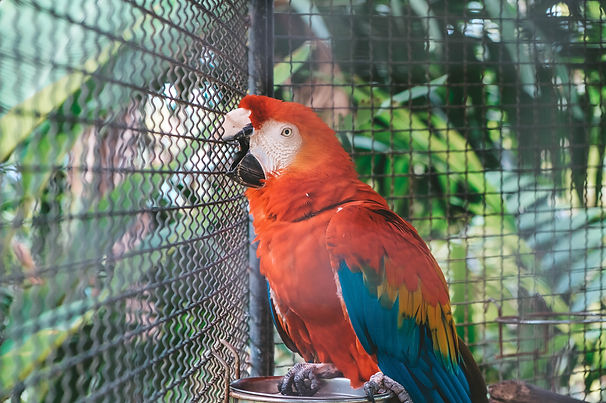top of page
MISSION
MISSION
TO PROTECT AND PRESERVE PARROTS
IN CAPTIVITY AND IN THE WILD
The Pat Palmer Foundation is proud to provide assistance and resources to protect and preserve parrots both in captivity and in the wild.
Parrots in Captivity

Scarlet Macaw
-
Sanctuaries and the Challenge of Longevity
Parrots have unusually long life spans, which, depending on size can span from 20 to 80 years or more. Their unique longevity means that parrots often outlive their owners. Some parrots are abandoned by owners because of the difficulty and expense in properly caring for them, and as a result of either abandonment or outliving their owners, many parrots wind up in sanctuaries. The Pat Palmer Foundation partners with sanctuaries around the country to provide funding for the various needs of the parrot population in captivity, including the sheltering, feeding and other care requirements of these magnificent birds. In addition, parrot health requires that sanctuaries provide adequate shelter with varying degrees of space, since parrots range in size from small parakeets to large macaws and kakapos.

Severe Macaw
-
Health Initiatives
Parrots not only require a special diet, but need to be socialized and carefully monitored for diseases like Proventricular Dilatation Disease (PDD), an incurable wasting disease of parrots, likely of viral origin, that produces gastrointestinal and neurologic problems which are often fatal. The Foundation works to support parrot health research, and partners with universities and organizations that are addressing the specific health issues of parrots.
-
Education and Outreach
The Foundation provides support to organizations that promote the public knowledge regarding the care and treatment of parrots, as well as outreach programs and educational services.
-
Adoption
When parrots are abandoned or outlive their owners, many sanctuaries in the United States provide adoption services. These organizations provide assistance with the relocation and transportation of birds to proper homes. They also help train those prospective owners who have never owned a parrot. Finding the right home for a parrot is a unique challenge that requires equal degrees of love and expertise. Outreach programs help new parrot owners understand the responsibility that comes with owning one of these incredible birds.
Parrots in the Wild

Blue and Gold Macaw
-
Protecting and Preserving the Natural Habitat
The Pat Palmer Foundation is also working with charitable organizations that support efforts to preserve and sustain the natural habitats of parrots which are endangered by poachers and development. Efforts are being made around the world to ensure that the natural habitats of parrots are safe, by enacting anti-poaching laws and regulations that put limits on development encroaching on natural habitats. The enormity of this challenge cannot be understated, as each host country faces difficult choices in balancing the need for economic development vs. the desire to maintain the natural wilderness state for parrots.
-
Promoting Ecotourism
Promoting ecotourism is another important way of protecting and preserving parrots in their natural habitats. Ectourism is aimed at stemming the tide of poaching by encouraging conservation efforts and opportunities to observe often-threatened wildlife in their natural habitats. Countries such as Costa Rica have instituted a country-wide ban on removing parrots from their natural habitat, and are actively encouraging ecotourism.

Blue and Gold Macaw
-
Re-introduction of Parrots Into the Natural Habitat
In addition to protecting and preserving the natural habitat, the re-introduction of parrots into the wilderness comes with a unique array of challenges that organizations supported by the Foundation are addressing.

Greater Sulphur-crested Cockatoo

Shamrock (hybrid Scarlet x Military) Macaw
Re-introduction of parrots into the natural habitat is extremely complex, involving a consideration of food sources, shelter that will facilitate reproduction, and a consciousness of predators and illnesses that might endanger parrots in the wild.
bottom of page